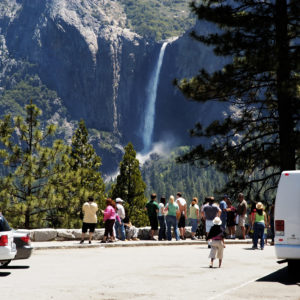When President Donald Trump released his proposed budget, the numbers were met with shock, horror, and chagrin. Various groups lamented the steep cuts to the budgets of the Environmental Protection Agency and the State Department, but these were far from the only government agencies to be confronted with the need to tighten their belts. Both Native American and environmentalist groups were concerned that Trump would impose painful Interior Department budget cuts. Instead, the budget continues to fund many necessary services, although opportunities for increased user-based funding exist.
The Interior Department has wide-ranging authority. It manages the National Park Service, regulates mineral extraction on federal lands, handles federal programs and regulations relating to American Indian reservations, and owns much of the American west. Under the Interior Department budget Trump proposed in late May, the department would receive $1.1 billion in 2018, $162.8 million less than it had the year before. The reductions would primarily come from cuts to several appropriations programs, though nearly every program would see some budget reductions.
Certain groups, however, view the cuts to the Interior Department budget with concern. Among these are various Native American organizations, who are concerned that cuts to social services on reservations. (The budget for the Department of Indian Affairs administers reservation public health, safety, and other services on reservations.)
Under Trump’s initial budget proposal, the Department of Indian Affairs would have seen its budget cut by 12 percent. Although far lower than cuts to the State Department and the Environmental Protection Agency, it does involve reductions for a broad array of programs including reservation education.
“President Trump’s budget proposal for programs affecting Indian Country is extremely troubling because of its disregard for the federal government’s responsibilities and its troubling lack of understanding of the challenges facing tribal communities,” said Sen. Tom Udall, D-N.M.
A few key areas escaped cuts. Although Native American groups viewed Trump’s budget with skepticism, given the cuts it made to social services, it maintains funding for tribal land acquisition. These programs provide funding to purchase land which various tribes consider to be ancestral homelands, returning it to tribal control. The Trump administration’s budget cut funding for federal land acquisition in other areas, but maintained it for tribal land acquisition.
“Federal land acquisition funding has been used to purchase land for inclusions in national parks, wildlife refuges, and other public lands,” said Heather Swift, a spokesperson for the Interior Department. “The savings realized from the reduction to land acquisition [through the Land and Water Conservation Fund] allows the department to prioritize operations across the department including in Indian affairs.”
Despite the $129 million remaining in the program budget, Native American observers are skeptical that Trump will match the Obama administration, which restored more than a half-million acres of tribal homelands via federal land acquisition.
Ironically, among the areas to have escaped budget cuts was outdoor recreation. Speaking soon after the budget was announced, Sec. Zinke specifically praised the budget for highlighting “areas for investment, such as addressing the maintenance backlog in our National Parks.” Under the terms of Trump’s Interior Department budget, wildlife management will continue to be funded, but National Monuments and National Conservation Areas will see their budgets cut, and most likely hours, cut in order to reduce the funds needed to keep them open.
This reflects the reality of federally-owned wilderness recreation areas. Although millions of Americans visit National Parks, monuments, and wilderness areas each year, on the whole, the nominal fees they pay to access these areas do little to offset the costs of keeping them open. The National Parks Service alone has a maintenance backlog of $12 billion and the proposed budget requests an addition $34 million for construction.
Even as parks and other areas reach record high attendances, entrance fees have remained too low to finance necessary staffing and repairs. As a result, the department is looking at cutting man-hours in 2018, adding to the maintenance backlog.
To help fill in this gap, some have argued that the growing outdoor recreation industry should pick up part of the tab for park maintenance.
“While the lucrative outdoor industry clamors for the federal government to declare more of the West as wilderness, it does nothing to address the financial challenges of managing the land,” says Terry L. Anderson, a senior fellow at the Property and Environment Research Center in Bozeman, Mont., who notes that sales of outdoor clothing and equipment total about $120 billion annually. Anderson argues that a tax on these products could be used to fund the maintenance of national wilderness area.
“Profits from recreation are what drive the politics of federal land management. More wilderness for backpackers means that wealthy, healthy Gen Xers and millennials will buy more backpacks, tents, boots, mountain bikes and high-tech clothing for trekking into the backcountry,” he writes. “Instead of asking taxpayers to go on subsidizing all this, for ever-larger areas as more monuments and parks are designated, the hikers and bikers should carry the load themselves. If they want to play, they ought to pay.”

